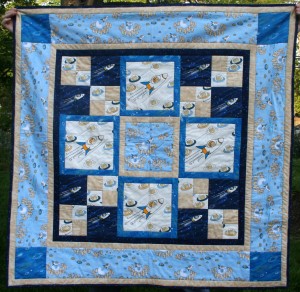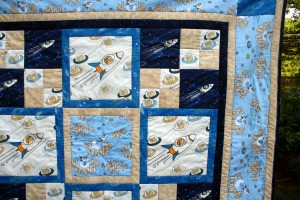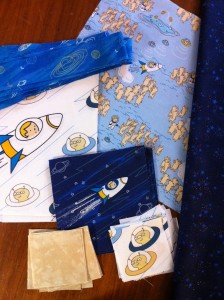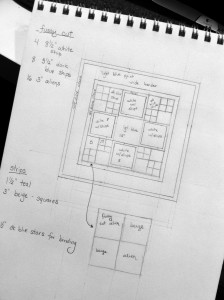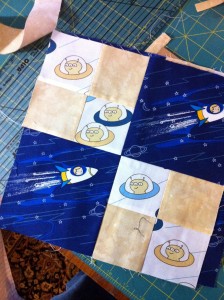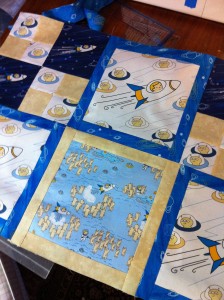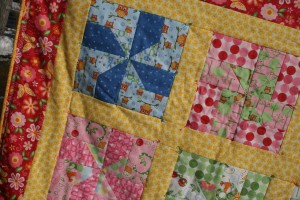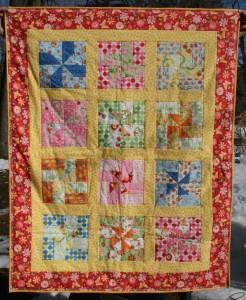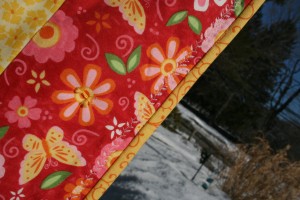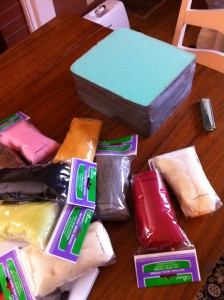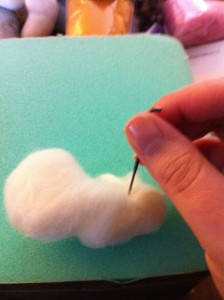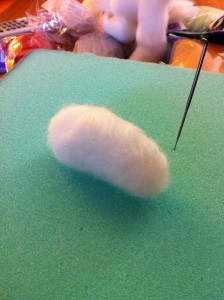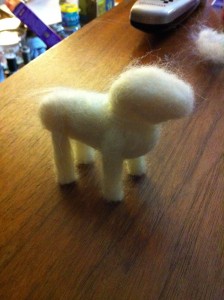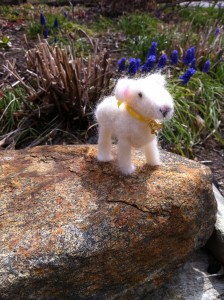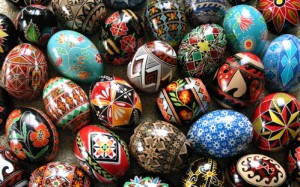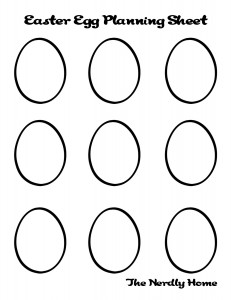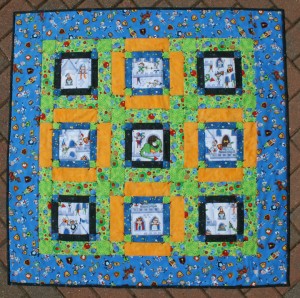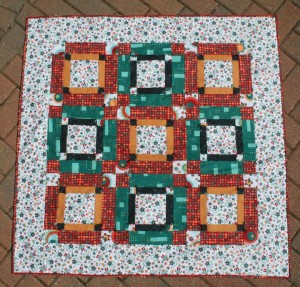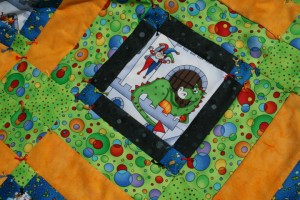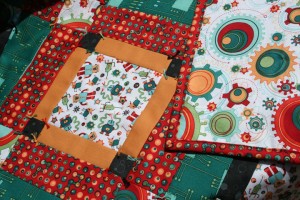It’s time again for another baby quilt!
This one was really special to me for a few reasons.
- It’s my first commissioned quilt.
- It’s the first quilt that I designed from scratch, without using a pattern.
- It’s the first quilt that I’ve ever machine quilted.
My good friend Erik asked if I could make a baby quilt for a friend of his. He originally wanted a Star Wars themed quilt. I had thought this would be no problem, until I actually went looking for Star Wars fabric. For a while after the prequels came out, there were a fair number of different officially licensed fabrics to be found.
Unfortunately, by now they’re long gone.
My only option would have been to use the sheets sold by Potter Barn Kids, and that was entirely cost prohibitive and would only yield one fabric. With the basic feel in mind, I went off to the fabric store. That’s where I came across the “Marty Goes to Mars” fabric line by Camelot Cottons.
Because I went into the store with no idea what I was going to wind up making, I really didn’t know how much of each fabric to get. I got some of each of them in varying amounts based mostly on how much I liked them. When I got home, I did check out a few books to see how other quilts handled using a big novelty prints like the ones I had just bought. In the end, I took ideas from a few of them and worked them into my own design.
Once the top went together, I was ready to quilt*. All my previous quilts had been hand tied rather than quilted. It’s a somewhat easier technique, but a tied quilt can fall apart with heavier use. For these quilts intended for babies and small children, something a bit hardier is better. I was pretty nervous, especially since this would be my first quilting experience and the quilt was for someone else. In the end, I was really pleasantly surprised with how well it all went. I found a variegated thread in shades of blue to do the quilting in. I mostly stuck to stitching in the seams, but for some of the larger squares, I had to add extra stitches for stability.
Because this was my first machine quilting attempt, I wanted to stick with straight lines. So, I chose to accent some of the speed lines on the space ship squares and I quilted a large star in the center square. I was really pleased with how it turned out. It felt really well put together and sturdy. The fabrics were adorable and I loved putting them together.
*For my readers who are not familiar with how a quilt goes together, let me give a brief explanation. A quilt is made up of three layers: the top, the batting (the squishy stuff in the middle) and the back. You have to secure these layers together at regular intervals or the batting would wind up tearing and become all bunched up in one part of the quilt. There are two different ways to do this. Tying involves making little knots every few inches with embroidery floss. Quilting is using strong cotton thread to sew lines of very small stitches. These lines can be different distances apart depending on the type of batting used. Quilting can be done either by hand or on a machine.
